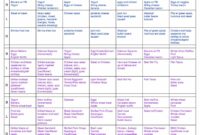South Beach Diet protein shakes offer a convenient and potentially effective way to supplement the popular weight-loss plan. This guide delves into the benefits and drawbacks of incorporating protein shakes into the South Beach Diet, exploring suitable recipes, commercially available options, and considerations for various dietary needs. We’ll examine how these shakes can support weight management and muscle maintenance while addressing potential risks and ensuring adherence to the diet’s core principles. Understanding the nuances of protein shake integration is key to maximizing the South Beach Diet’s effectiveness.
The South Beach Diet, known for its phased approach focusing on healthy fats and lean proteins, can be significantly enhanced with strategically chosen protein shakes. These shakes provide a convenient way to increase protein intake, aiding in satiety, muscle preservation, and overall adherence to the diet’s guidelines. However, not all protein shakes are created equal; careful selection of ingredients is crucial to avoid sabotaging the diet’s principles. This guide will equip you with the knowledge to make informed choices.
South Beach Diet Overview
The South Beach Diet is a low-carbohydrate diet that emphasizes healthy fats and lean protein, designed for sustainable weight loss and improved cardiovascular health. Unlike many restrictive diets, it focuses on the *quality* of carbohydrates consumed rather than simply eliminating them entirely. This approach aims to minimize blood sugar spikes and promote sustained energy levels.
The diet is structured in three phases, each with specific dietary guidelines intended to guide individuals through the weight loss process and then help them maintain their results long-term. Each phase gradually introduces more carbohydrate-rich foods, helping dieters to build sustainable eating habits.
Phase 1: The Initial Phase
This phase, lasting approximately two weeks, is the most restrictive. Its primary goal is rapid weight loss and the breaking of unhealthy eating habits, particularly the overconsumption of refined carbohydrates and unhealthy fats. During this phase, highly processed foods, sugary drinks, and most fruits are restricted. Allowed foods include lean proteins (fish, poultry, beans, tofu), healthy fats (avocado, nuts, olive oil), and non-starchy vegetables (spinach, broccoli, cauliflower). The focus is on controlling blood sugar levels and curbing cravings. For example, a typical breakfast might be eggs with spinach and a small amount of avocado.
Phase 2: The Transition Phase
Once the initial weight loss goal is achieved (typically a few pounds), the diet transitions to Phase 2. This phase allows for a more gradual reintroduction of some healthy carbohydrates, including whole grains, fruits (in moderation), and higher-fiber foods. The emphasis remains on choosing complex carbohydrates over simple ones. This phase is about finding a sustainable eating pattern that supports continued weight loss or weight maintenance while expanding food choices. A typical lunch might include grilled chicken salad with whole-wheat bread and a variety of vegetables. This phase is intended to last until the individual reaches their desired weight.
Phase 3: The Lifetime Maintenance Phase
Phase 3 is designed to be a long-term lifestyle change. It focuses on maintaining the weight loss achieved in the previous phases. Almost all foods are allowed, but portion control and the emphasis on healthy choices remain crucial. The diet encourages incorporating regular physical activity and mindful eating habits to sustain the weight loss long-term. For example, a dinner in this phase might consist of lean fish with brown rice and steamed vegetables. This phase is about building a healthy relationship with food and maintaining a healthy weight over the long term.
Foods Allowed and Restricted
The South Beach Diet’s success hinges on understanding which foods are encouraged and which are limited in each phase. The diet differentiates between “good” and “bad” carbohydrates, focusing on low-glycemic index foods that cause a slower, more gradual rise in blood sugar. Highly processed foods, sugary drinks, and foods high in unhealthy fats are generally restricted throughout all phases, while lean proteins, healthy fats, and non-starchy vegetables are encouraged. The specific restrictions and allowances vary depending on the phase. Detailed food lists are usually provided in the South Beach Diet plan resources.
Last Point
Ultimately, the successful integration of South Beach Diet protein shakes hinges on mindful selection and responsible consumption. By understanding the principles of the diet, choosing appropriate protein sources, and being aware of potential drawbacks, individuals can leverage these supplements to support their weight loss journey and overall health. Remember to consult with a healthcare professional or registered dietitian before making significant dietary changes, especially if you have underlying health conditions.



